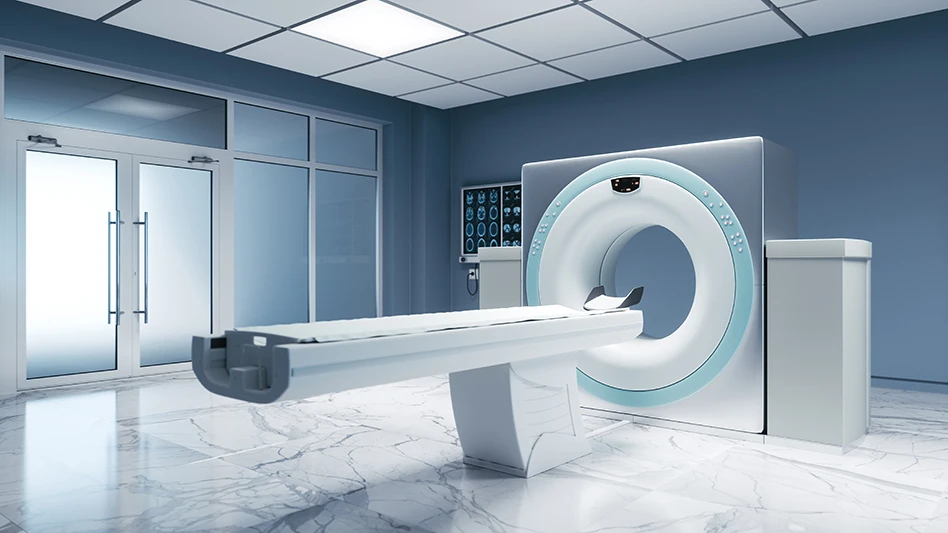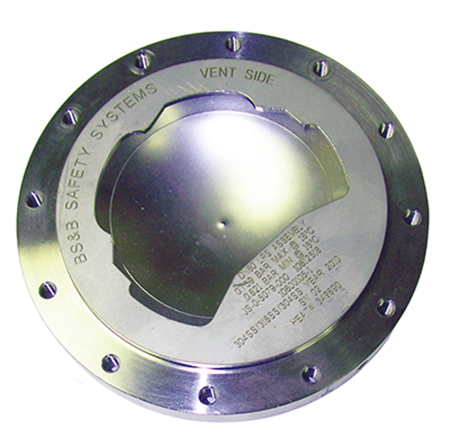
CREDIT ALEKSTOCK.COM | ADOBE - 373485881
Medical equipment designers rely on rupture disk devices for pressure relief and pressure release of gases and liquids for essential diagnostic, life safety, and analytical instrumentation. However, the challenge of time faces medical device original equipment manufacturer (OEM) product designers; how do we get a custom solution in an acceptable timeframe?
Now, at least one industry innovator has streamlined the prototype process to expedite the delivery of customized solutions for medical device OEMs that meet a wide range of unique application requirements. Taking its cue from racing car pit crews, the fast-tracked development process involves the coordination of specialized internal teams with unique skillsets to ensure timely delivery of dependable prototypes that are prepared for evaluation, additional adjustments, or full-scale production.

high quality rupture disks that quickly progress from
concept to production level performance.
Global demand for innovative rupture disk designs
With the global energy pivot that is occurring combined with stronger sustainability strategies, the 2020’s mark an aggressive period of innovation that impacts medical device OEMs. The pace of creativity is faster than ever with OEM product development cycles compressed to achieve the fastest entry to market.
“OEMs often require a unique rupture disk in terms of its dimensions, material combinations, or the operating conditions. In many cases, the rupture disk is a last-minute consideration once other design parameters are defined and so they need a custom prototype delivered within relatively tight timelines as part of their product development,” says Geof Brazier, managing director, BS&B Safety Systems, Custom Engineered Products Division.
Medical device OEMs increasingly require expedited delivery of prototypes without compromising on quality or performance. Recognizing the need, BS&B Safety Systems developed a comprehensive support program called the Prototype Introduction Team (PIT) for OEMs that require a ‘white glove’ experience for custom rupture disk device.
According to Brazier, the program was developed and patterned after the race car pit crew strategy, where highly trained individuals quickly and seamlessly work together - each with a specific role in the process and with a high degree of anticipation of the customers’ requirements. The PIT crew’s individual responsibilities are fine-tuned for maximum efficiency, in coordination with the other members of the crew since every step can be critical to winning.
Achieving such rapid turnarounds requires meticulous planning, rigorous training, and exceptional teamwork. At BS&B, the PIT team involves experts assembled from sales, engineering, purchasing, manufacturing, and quality control. The PIT team incorporates design engineering throughout and manages all aspects of scheduling to ensure quality, performance, and aesthetic condition with on-time completion and delivery.
According to Brazier, the PIT Program design team’s expertise extends from rupture disks and buckling pin valve technology to explosion protection and prevention devices. The custom engineered products team has decades of machining experience, which now embraces 3D printing capabilities to reduce the time required for prototype manufacture.
A few of the many considerations available to the OEM can include novel product marking, inclusion of integral flame arresters or Burst Alert sensors, as well as cleaning, custom packaging, and certifications. Extensive validation capabilities further support the OEM to achieve project targets on time and on budget.
“Every application is unique, so questions inevitably arise. To ensure the OEM can get answers at any time during prototype creation, we assign a project manager to serve as a single point of contact,” says Brazier, adding that close coordination not only reduces potential technical issues but also supports the customer who may have evolving design factors that impact the pressure relief device and may trigger a running change.
According to Brazier, the PIT program’s coordination and attention to detail has accelerated the product development of not only custom rupture disks but also OEM design decision making.
For medical device OEMs, the expedited prototype program results in rupture disks that quickly progress from concept to production level performance, price, and quality.
“Approximately two-thirds of our prototypes progress to the next development step,” Brazier explains. “Some become another prototype. Others move quickly into full production.”
Rupture disk devices are a vital safety technology that can protect medical device OEM equipment from potentially damaging overpressure or vacuum conditions in various processes. When customization is necessary to accommodate the OEM’s specific processes, working with an expert partner capable of expediting prototyping can dramatically improve the equipment’s reliability and longevity while reducing maintenance and overall cost of ownership.
Latest from Today's Medical Developments
- Arcline to sell Medical Manufacturing Technologies to Perimeter Solutions
- Decline in German machine tool orders bottoming out
- Analysis, trends, and forecasts for the future of additive manufacturing
- BlueForge Alliance Webinar Series Part III: Integrate Nationally, Catalyze Locally
- Robot orders accelerate in Q3
- Pro Shrink TubeChiller makes shrink-fit tool holding safer, easier
- Revolutionizing biocompatibility: The role of amnion in next-generation medical devices
- #56 Lunch + Learn Podcast with Techman Robot + AMET Inc.





